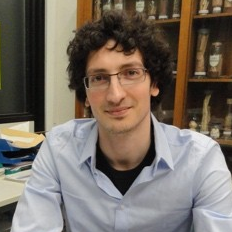Strategies for Enhancing the Metabolome of Marine-Derived Fungi
A special issue of Marine Drugs (ISSN 1660-3397).
Deadline for manuscript submissions: closed (30 November 2019) | Viewed by 20591
Special Issue Editors
Interests: marine natural products, marine medicines, chemical ecology
Special Issues, Collections and Topics in MDPI journals
Interests: marine invertebrates and associated microorganisms, endophytes, bioactive natural products, structure elucidation, analytical chemistry, biosynthesis, marine biotechnology
Special Issue Information
Dear Colleagues,
Marine-derived fungi continue to attract the interest of natural product researchers as a prolific source of structurally diverse and bioactive natural products, many of which play an eminent role as potential leads in drug discovery. Recent advances in genomics have revealed that the biogenetic potential of fungi is greatly underestimated, which is underlined by the fact that only a subset of fungal biogenetic gene clusters is expressed under standard laboratory growth conditions. To address this challenge, various strategies have been successfully applied, such as selective variation of abiotic culture conditions, namely OSMAC (One Strain MAny Compounds) approach, cultivation of two or more microbes in a single confined environment (co-culture or mixed fermentation), or genomics-based approaches including genome mining and epigenetic modulation, to name only a few. In this regard, the novel chemistry of induced “cryptic” metabolites often coincides with exceptional bioactivity profiles, thus, uncovering the vast potential of marine-derived fungi.
This Special Issue of Marine Drugs will focus on the potential of emerging strategies to elicit the cryptic secondary metabolome of marine-derived fungi in the quest for novel and/or bioactive natural products. As Guest Editors, we cordially invite you to contribute reviews, original papers, or short communications to this Special Issue.
Prof. Dr. Peter Proksch
Dr. Georgios Daletos
Guest Editors
Manuscript Submission Information
Manuscripts should be submitted online at www.mdpi.com by registering and logging in to this website. Once you are registered, click here to go to the submission form. Manuscripts can be submitted until the deadline. All submissions that pass pre-check are peer-reviewed. Accepted papers will be published continuously in the journal (as soon as accepted) and will be listed together on the special issue website. Research articles, review articles as well as short communications are invited. For planned papers, a title and short abstract (about 100 words) can be sent to the Editorial Office for announcement on this website.
Submitted manuscripts should not have been published previously, nor be under consideration for publication elsewhere (except conference proceedings papers). All manuscripts are thoroughly refereed through a single-blind peer-review process. A guide for authors and other relevant information for submission of manuscripts is available on the Instructions for Authors page. Marine Drugs is an international peer-reviewed open access monthly journal published by MDPI.
Please visit the Instructions for Authors page before submitting a manuscript. The Article Processing Charge (APC) for publication in this open access journal is 2900 CHF (Swiss Francs). Submitted papers should be well formatted and use good English. Authors may use MDPI's English editing service prior to publication or during author revisions.
Keywords
- Marine-derived fungi
- OSMAC
- Co-culture
- Mixed fermentation
- Epigenetic remodeling
- Silent genes
- Cryptic metabolome
- Bioactive natural products







